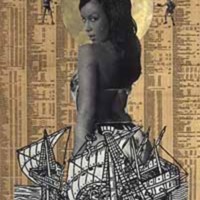
Lace and Slavery
During the Industrial Revolution Nottingham was famous for the manufacture of lace. In 2007 British-Ghanaian artist Godfried Donkor, supported by The New Art Exchange and the Centre for Contemporary Art in the city, investigated the often-neglected connections between this luxurious commodity and the cotton picked by enslaved Africans in the Caribbean and American South. The research culminated in an exhibition, ‘Once Upon a Time in the West There Was Lace’, at the Yard Gallery at Wollaton Hall in early 2008. The Elizabethan manor is also home to the Industrial Museum which holds lace-making machinery. A key part of the display were outfits created from brightly coloured lace, now a prized material in West Africa. Donkor's paintings on pages of the Financial Times represented people, culture and goods crossing the Atlantic in different eras. The exhibition was accompanied by a series of public events which looked at the links between the city’s past lace-making industry and slavery, including lectures and a free symposium.
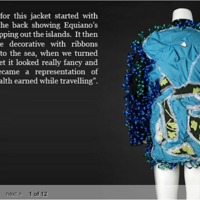
The Equiano Project Culture Clubs
Part of the Equiano Project led by Birmingham Museum and Art Gallery, the Culture Clubs were a series of outreach projects enabling contributions by local schools and community groups to the way Equiano’s story is told and the issues surrounding how his experience is represented. The four groups - Techno Elders, Hockley Youth Project, Deansfield Secondary School and King George V Primary School - worked closely with the project teams and professional artists to produce work based upon Equiano’s life story. Their work featured within the Gas Hall and Soho House exhibitions.
The Hockley Youth Project’s work was displayed in the ‘Unshackled’ exhibition at Soho House in Birmingham, once home of the industrialist Matthew Boulton. Working with visual artist Nicola Richardson, the group produced a series of suits and artworks which explore themes around Equiano’s life, particularly his success as a businessman and entrepreneur.
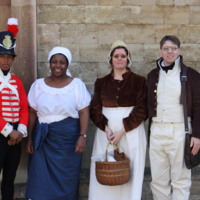
Beyond the Bicentennial
In collaboration with the Peterborough branch of the African Caribbean Forum, Peterborough Museum hosted 'Beyond the Bicentennial, 1788-1838: Exploring 50 Years of the Slave Trade'. The exhibition's focus was the fifty years leading up to the end of slavery in the British Empire, 1833. It highlighted museum objects and local connections to the era of abolition, including black communities in Peterborough and links between slave-produced sugar and the rise of tea drinking in Georgian Britain. Two special event days included Georgian period re-enactors, historical talks on slavery, African drumming workshops, African food tasting and community displays.
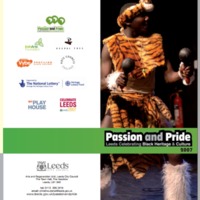
Passion and Pride
Passion and Pride was a creative partnership project bringing together Leeds City Council's Arts and Regeneration Unit with twelve local community organisations. Building on momentum established through Black History Month, the performances, exhibitions and workshops celebrated black heritage and culture in Leeds during 2007. Highlights included the performance of 'Grandma's Story' at West Yorkshire Playhouse by the 10-2 Club, a short play about the real life experience of living through slavery.
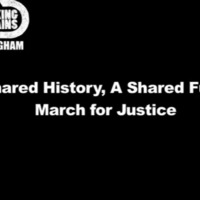
A Shared History, A Shared Future
A Shared History, A Shared Future was a series of projects led by Birmingham Libraries to engage with different communities within Birmingham. The project as a whole identified archival materials, local historical documents and music with an emphasis on the diverse multicultural nature of historical and modern indentured slavery, and how it relates to everyday lives in Birmingham. Over 1000 participants from schools and community groups took part in over 150 workshops to create stories, artwork, banners, protests, games, films, dances, drama and performances. A resource pack, the liberty box, was produced to encourage community groups, youth groups and others to explore the issues of slavery. In August 2007, the project organised the March for Justice in Birmingham city centre, a recreation of the Quaker and philanthropist Joseph Sturge's march against slavery in August 1838. The day included an anti-slavery fashion show, a limbo performance, storytelling, African drumming, and a Slavery Question Time Special hosted by an actor representing Olaudah Equiano.
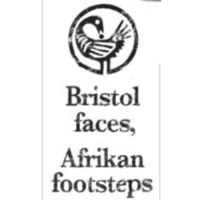
The Adisa Project: Bristol faces, Afrikan footsteps
The Adisa project gave a group of 20 young people of African and African Caribbean heritage the chance to investigate their roots both in Bristol and Africa. The group researched the history and legacies of Bristol's involvement in the trade in enslaved Africans, and its impact on one African country: Ghana. This was a community partnership project in collaboration with the Bread Youth Project, Full Circle Youth and Family and the Mill Youth Centre. The group opened their own exhibition, 'Afrikan Footsteps' at the City Museum and Art Gallery, after a two-week research trip to Ghana to learn about the country's history and culture. The exhibition included short films made by the participants; a Quotes Wall, taken from young people’s interviews with members of their local community; a wall of their personal heroes; a photographic exhibition of their trip; and 'Ma’afa Journey', a film recording their personal reactions to places visited in Ghana.